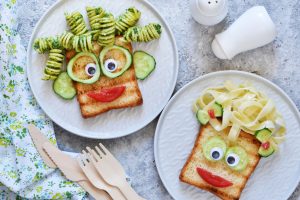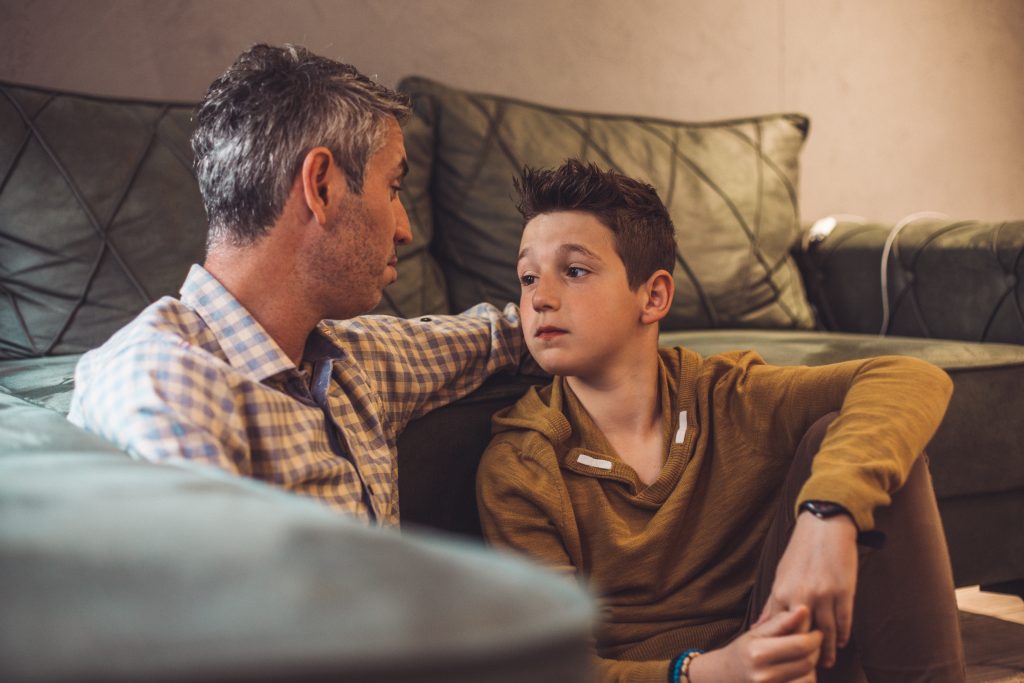 After 18 months of dealing with the stress of indoor COVID living, using screens for social connections, and managing the stress of hybrid education, most of us have been hankering for some much needed rest and relaxation this summer. As we head into the last weeks of summer and for some, the early return to school, it’s worth taking some time to savor time outside as part of this reset. Connecting families with the great outdoors benefits individual family members and improves family bonds as a whole. Creating neurodiverse family outings that go smoothly and have everyone feeling like a happy camper, however, can be challenging. It’s important to find ways to improve family outings so they work for everyone in your family. Even small adventures can make a big difference. Let’s finish off the summer by making memories that are as positive as possible for everyone.
After 18 months of dealing with the stress of indoor COVID living, using screens for social connections, and managing the stress of hybrid education, most of us have been hankering for some much needed rest and relaxation this summer. As we head into the last weeks of summer and for some, the early return to school, it’s worth taking some time to savor time outside as part of this reset. Connecting families with the great outdoors benefits individual family members and improves family bonds as a whole. Creating neurodiverse family outings that go smoothly and have everyone feeling like a happy camper, however, can be challenging. It’s important to find ways to improve family outings so they work for everyone in your family. Even small adventures can make a big difference. Let’s finish off the summer by making memories that are as positive as possible for everyone.
Why getting outdoors for neurodiverse family outings is worth it:
Spending time in nature is beneficial and fun for all of us: we can kick off our shoes and wade into the ocean, hike to a beautiful vista or just have a picnic in our own backyards. It’s especially great for neurodivergent kids–those youngsters with ADHD, LD, ASD, 2e and/or mental health issues. When any of us venture outside to a beach, park or any green spot, our entire demeanor shifts. We shed some of the stress of our daily lives, feel more relaxed and connect with the atmosphere around us. Children, teens and adults start to feel a welcome sense of spaciousness and freedom.  For neurodivergent kids, especially those living with anxiety or depression, this freedom is often sorely needed. These children and adolescents need a chance to let go from the pressures of all things that they struggle to remember to do and from not feeling good enough at doing them. They spend so much time trying to focus, stay organized and correct their mistakes, that a break to wander, play and explore is a welcome (and necessary) relief. On neurodiverse family outings and excursions outdoors, youngsters and adults alike can just be in the moment. They can enjoy the wide range of outside activities and explore the beauty of the natural environment. They may be happy just to be in a different physical space and do nothing at all. These experiences in nature can be very restorative for them and for you as parents, too. Family outings also provide ideal times for family fun as the ‘shoulds’ of our daily routines are transformed into games, explorations and discoveries.
For neurodivergent kids, especially those living with anxiety or depression, this freedom is often sorely needed. These children and adolescents need a chance to let go from the pressures of all things that they struggle to remember to do and from not feeling good enough at doing them. They spend so much time trying to focus, stay organized and correct their mistakes, that a break to wander, play and explore is a welcome (and necessary) relief. On neurodiverse family outings and excursions outdoors, youngsters and adults alike can just be in the moment. They can enjoy the wide range of outside activities and explore the beauty of the natural environment. They may be happy just to be in a different physical space and do nothing at all. These experiences in nature can be very restorative for them and for you as parents, too. Family outings also provide ideal times for family fun as the ‘shoulds’ of our daily routines are transformed into games, explorations and discoveries.
Tips to having a successful summer family adventure with neurodiverse kids and teens:
Pick a location that offers something for everyone and doesn’t require much planning.
Talk with your family about the available options and what people want to do so you can all work together on making a good experience for everyone. Brainstorm first, and then negotiate any necessary compromises. These outings with your neurodiverse family involve the entire family, so make sure everyone’s voice is heard.
Limit your expectations.
Whatever happens has to be okay with you and okay with your family. Share your hopes for the day and listen to theirs. Be open to and make room for spontaneity and go with the flow. The less control you need to exert during the day, the better it will be for you and for everyone else. Remember to play!
Give your teen or child a few specific, simple tasks.
 In preparation for your neurodiverse family outing excursion, make a list and write down items that can be checked off. This gives kids more practice in developing those ever-needed executive planning and organizing skills. They’ll be less anxious about thinking they’ll arrive unprepared or left something important behind, too. Remind them to bring items that help them relax, or a go-to activity if times are tough.
In preparation for your neurodiverse family outing excursion, make a list and write down items that can be checked off. This gives kids more practice in developing those ever-needed executive planning and organizing skills. They’ll be less anxious about thinking they’ll arrive unprepared or left something important behind, too. Remind them to bring items that help them relax, or a go-to activity if times are tough.
Create some guidelines about appropriate behaviors for your day.
Limit these to 2 things, because the kids aren’t likely to remember more than that. These guidelines should revolve around safety primarily, and be logical and explicit (e.g. swim with another person, not alone, and ask beforehand; stay with the group when hiking; play around the picnic area where we can see you). Remind your child or teen of these 2 guidelines as you arrive at the location. Then ask them to repeat them back to you. This verbal repetition signals to you that they’ve got it.
Focus on the positive.
 There will likely be a blip or two on your neurodiverse family outings. Something may happen that may frustrate you or other family members. That’s a normal part of being together and doing an activity. Take a deep breath, focus on what’s most important and help your son or daughter recalibrate. Ask your family what would help them move on and/or make amends if there’s been an argument. Practice forgiveness and refocus everybody’s attention on the positive goals of the day such as exploring a different place or trying a new activity. This especially helps neurodiverse kids overcome the negative memory bias that often leads them to focus more on the negatives than the positives. If they have trouble shifting, look around and notice something in their environment–an adaptation of “I spy”–to become more present. Say something like: “I see a hawk in the sky. How big do you think it is?” “Wow, that biker just rode by so quickly. I wonder how fast she is going?” “Can you pick a cool spot for our blanket so we can have lunch?”
There will likely be a blip or two on your neurodiverse family outings. Something may happen that may frustrate you or other family members. That’s a normal part of being together and doing an activity. Take a deep breath, focus on what’s most important and help your son or daughter recalibrate. Ask your family what would help them move on and/or make amends if there’s been an argument. Practice forgiveness and refocus everybody’s attention on the positive goals of the day such as exploring a different place or trying a new activity. This especially helps neurodiverse kids overcome the negative memory bias that often leads them to focus more on the negatives than the positives. If they have trouble shifting, look around and notice something in their environment–an adaptation of “I spy”–to become more present. Say something like: “I see a hawk in the sky. How big do you think it is?” “Wow, that biker just rode by so quickly. I wonder how fast she is going?” “Can you pick a cool spot for our blanket so we can have lunch?”
Enjoy your adventures!
Read more blog posts:
- Regulate Summer Screen Time for Your Child with ADHD and Yourself
- ADHD and Negativity: Why ADHD kids and teens say “No” and how to help them communicate
- Kick off the Summer with 6 Easy Strategies for Better Living with ADHD
Learn more on Dr. Saline’s YouTube Channel!
Handouts, webinars & more in Dr. Saline’s Store:
https://drsharonsaline.com/product/live-adhd-webinar-qa-navigating-college-with-adhd-setting-yourself-up-for-success/ https://drsharonsaline.com/product/managing-technology-families-video/ https://drsharonsaline.com/product/home-seminar/
 Summer is here! How are your kids and teens with ADHD spending the extra free time? On the one hand, kids and teens have more time to turn to video games and connecting with friends on social media. On the other, they have more time and space to move around now that they aren’t required to sit and learn so much. This is a much needed break for kids and teens with ADHD who often self-regulate with movement. But with less structure and help with supervision, parents often have trouble keeping up with the entertainment, energy, and emotions of kids all day, every day. Many parents then turn to screens to help kids take the edge off of an otherwise hectic time. So it’s not whether screens are part of summer vacation, but how they are. So how can you help your family better regulate summer screen time?
Summer is here! How are your kids and teens with ADHD spending the extra free time? On the one hand, kids and teens have more time to turn to video games and connecting with friends on social media. On the other, they have more time and space to move around now that they aren’t required to sit and learn so much. This is a much needed break for kids and teens with ADHD who often self-regulate with movement. But with less structure and help with supervision, parents often have trouble keeping up with the entertainment, energy, and emotions of kids all day, every day. Many parents then turn to screens to help kids take the edge off of an otherwise hectic time. So it’s not whether screens are part of summer vacation, but how they are. So how can you help your family better regulate summer screen time?  Social media has the potential to help kids and teens with ADHD expand their social groups and foster stronger connections. They can become part of supportive communities that help them learn to express themselves and develop a stronger sense of self and identity. After years of feeling behind in certain areas compared to their peers, finding ways to improve their self-esteem and sense of belonging makes a big impact on kids and teens with ADHD. Access to the internet, with its vast amount of information, also encourages learning. It can nurture the interests of kids and teens with ADHD. If a child doesn’t have access to a yo-yo teacher in their neighborhood, they can learn the basics and some fun tricks on YouTube. Importantly, they can also learn at their own pace. Sometimes kids with ADHD fall behind with certain styles of learning used in school, so having the opportunity to experience how they learn best encourages them to self-advocate for accommodations that might help them succeed now and in the future.
Social media has the potential to help kids and teens with ADHD expand their social groups and foster stronger connections. They can become part of supportive communities that help them learn to express themselves and develop a stronger sense of self and identity. After years of feeling behind in certain areas compared to their peers, finding ways to improve their self-esteem and sense of belonging makes a big impact on kids and teens with ADHD. Access to the internet, with its vast amount of information, also encourages learning. It can nurture the interests of kids and teens with ADHD. If a child doesn’t have access to a yo-yo teacher in their neighborhood, they can learn the basics and some fun tricks on YouTube. Importantly, they can also learn at their own pace. Sometimes kids with ADHD fall behind with certain styles of learning used in school, so having the opportunity to experience how they learn best encourages them to self-advocate for accommodations that might help them succeed now and in the future. 
 If you need to, consider shutting down the internet or turning off phones to discourage late-night usage. Some families choose to have a phone basket or cubby to put everyone’s devices in. Doing this an hour or two before bed will help everyone fall asleep faster. Many families choose not to keep television sets or computers in bedrooms to help discourage any over-usage. This should help to improve your child’s sleeping patterns, which often aggravate any cognitive or energy issues they may be having.
If you need to, consider shutting down the internet or turning off phones to discourage late-night usage. Some families choose to have a phone basket or cubby to put everyone’s devices in. Doing this an hour or two before bed will help everyone fall asleep faster. Many families choose not to keep television sets or computers in bedrooms to help discourage any over-usage. This should help to improve your child’s sleeping patterns, which often aggravate any cognitive or energy issues they may be having.  The Centers for Disease Control and Prevention (CDC) recently reported that children and teenagers spend an average of six to nine hours per day on screens. Bringing this number down is a lot easier in the summer with so many other activities and crafts to try and things to get into. Everyone should really be getting a much-needed break during this season. Follow my
The Centers for Disease Control and Prevention (CDC) recently reported that children and teenagers spend an average of six to nine hours per day on screens. Bringing this number down is a lot easier in the summer with so many other activities and crafts to try and things to get into. Everyone should really be getting a much-needed break during this season. Follow my  Encourage your children (and yourself, if you can) to be outside, screen-free, for at least an hour on the days that it is nice outside. And really, if you’re dressed appropriately, even rainy days can be fun to play in! Just be sure to check for upcoming storms and that the air quality is reasonable, especially with the unexpected weather we’ve been having and the increasing natural disasters happening around the world. Also, join your kids for family walks, bike rides, or other explorations. There is no denying that screens play a pivotal role in growth and development in this day and age. After a long year of
Encourage your children (and yourself, if you can) to be outside, screen-free, for at least an hour on the days that it is nice outside. And really, if you’re dressed appropriately, even rainy days can be fun to play in! Just be sure to check for upcoming storms and that the air quality is reasonable, especially with the unexpected weather we’ve been having and the increasing natural disasters happening around the world. Also, join your kids for family walks, bike rides, or other explorations. There is no denying that screens play a pivotal role in growth and development in this day and age. After a long year of 



 We all know that it’s more satisfying to accomplish what we set out to do than to leave things unfinished. Most
We all know that it’s more satisfying to accomplish what we set out to do than to leave things unfinished. Most  Find some time to remember what you like about one another. Take turn
Find some time to remember what you like about one another. Take turn Dinnertime can be a wonderful opportunity to catch up with your family, learn what’s going on in each other’s lives and share the delightful experience of a tasty meal. It has the potential to be an enjoyable break in your day where you can check-in with your family (and yourself) and connect with each other. However, if that doesn’t sound like your experience, you’re not alone. Dinnertime for families living with ADHD can look quite different. Your child or teen face unique challenges that make it difficult for them to calmly transition to the table and be ready to eat what’s served. I’ll discuss some of these challenges as well as how to help everyone feel more prepared and excited to enjoy a meal with one another.
Dinnertime can be a wonderful opportunity to catch up with your family, learn what’s going on in each other’s lives and share the delightful experience of a tasty meal. It has the potential to be an enjoyable break in your day where you can check-in with your family (and yourself) and connect with each other. However, if that doesn’t sound like your experience, you’re not alone. Dinnertime for families living with ADHD can look quite different. Your child or teen face unique challenges that make it difficult for them to calmly transition to the table and be ready to eat what’s served. I’ll discuss some of these challenges as well as how to help everyone feel more prepared and excited to enjoy a meal with one another.  Ideally, family members come together around the table in a friendly, happy mood. However, that can be a lot to expect at dinnertime for your ADHD family. Expecting kids to reign in emotions from the events of their day or even their last activity might be too much to ask. If they’re overwhelmed with having to stop what they were doing to eat at what they think is an inconvenient time, they’ll probably bring this upset to the table. They might also have had a difficult day and aren’t up for cheerfully sitting around you to eat dinner. Displeasure about the food or anxiety about the noise or conversation could also contribute to a foul mood. Chat with your child or teen about how to join the family and participate in the meal with more equanimity. Learning how to do this takes time and practice.
Ideally, family members come together around the table in a friendly, happy mood. However, that can be a lot to expect at dinnertime for your ADHD family. Expecting kids to reign in emotions from the events of their day or even their last activity might be too much to ask. If they’re overwhelmed with having to stop what they were doing to eat at what they think is an inconvenient time, they’ll probably bring this upset to the table. They might also have had a difficult day and aren’t up for cheerfully sitting around you to eat dinner. Displeasure about the food or anxiety about the noise or conversation could also contribute to a foul mood. Chat with your child or teen about how to join the family and participate in the meal with more equanimity. Learning how to do this takes time and practice.  Eating their preferred foods consistently might not offer them the best nutrition. But the stress of needing to swallow foods you don’t like–while also in an upset mood or heated emotional environment–isn’t good for the body, either. Having a familiar, fulfilling meal can help them get the sustenance and energy they need without needing to add more stress to an already stressful day. Ask them questions about the foods they like. Is it the flavor, the texture, the fact they can hold it in their hands? This will help you better grasp their eating needs as well as gain understanding about their experiences. Kids with ADHD want to be understood more than judged. Taking the time to inquire about their perceptive is meaningful to them and helpful to you.
Eating their preferred foods consistently might not offer them the best nutrition. But the stress of needing to swallow foods you don’t like–while also in an upset mood or heated emotional environment–isn’t good for the body, either. Having a familiar, fulfilling meal can help them get the sustenance and energy they need without needing to add more stress to an already stressful day. Ask them questions about the foods they like. Is it the flavor, the texture, the fact they can hold it in their hands? This will help you better grasp their eating needs as well as gain understanding about their experiences. Kids with ADHD want to be understood more than judged. Taking the time to inquire about their perceptive is meaningful to them and helpful to you.  If you’re concerned about your kid’s limited food preferences, try working with them slowly over time on expanding their food preferences. Forcing them to eat a meal that you might love, but they don’t, will only lead to an unpleasant experience for your family. See if you can find a new food once in a while that might be a healthier version of their favorite foods, but still meet their preferences. If your child loves french fries, try an often healthier alternative – sweet potato fries. Then, gradually move on to other similar foods. When they’re trying new foods, don’t set your expectations too high. You might think you have all the information and that you definitely got it right this time. The bottom line is–it’s still up to them to decide, and it still might not work. Prepare yourself for this scenario so you don’t give a strong reaction in the moment. The goal isn’t to shame your child or teen into eating. Showing support and acknowledge for their courage in taking a risk will help them feel more comfortable with trying new foods in the future.
If you’re concerned about your kid’s limited food preferences, try working with them slowly over time on expanding their food preferences. Forcing them to eat a meal that you might love, but they don’t, will only lead to an unpleasant experience for your family. See if you can find a new food once in a while that might be a healthier version of their favorite foods, but still meet their preferences. If your child loves french fries, try an often healthier alternative – sweet potato fries. Then, gradually move on to other similar foods. When they’re trying new foods, don’t set your expectations too high. You might think you have all the information and that you definitely got it right this time. The bottom line is–it’s still up to them to decide, and it still might not work. Prepare yourself for this scenario so you don’t give a strong reaction in the moment. The goal isn’t to shame your child or teen into eating. Showing support and acknowledge for their courage in taking a risk will help them feel more comfortable with trying new foods in the future.  Instead, knock on their door or calmly approach them (while respecting their privacy and physical boundaries) and let them know that dinner will be ready in 15 or 10 minutes and then with a 5 minute warning. Ask them to acknowledge the reminder using the
Instead, knock on their door or calmly approach them (while respecting their privacy and physical boundaries) and let them know that dinner will be ready in 15 or 10 minutes and then with a 5 minute warning. Ask them to acknowledge the reminder using the  Weekly family meetings are a perfect time to discuss ideas for upcoming meals. Collaborating on meals takes pressure off of planning and shopping for meals on your own. It also leads to a happier outcome for all and teaches essential living skills. If you’re looking for new ideas or inspiration, try looking on Pinterest from saved or new recipes, or dusting off those cook books to pass around. Encourage your kids to notice what they crave throughout the week, too. They can write them down or text them to you. Then, talk about this during your weekly family meeting.
Weekly family meetings are a perfect time to discuss ideas for upcoming meals. Collaborating on meals takes pressure off of planning and shopping for meals on your own. It also leads to a happier outcome for all and teaches essential living skills. If you’re looking for new ideas or inspiration, try looking on Pinterest from saved or new recipes, or dusting off those cook books to pass around. Encourage your kids to notice what they crave throughout the week, too. They can write them down or text them to you. Then, talk about this during your weekly family meeting.  If there’s time and interest, involve your child or teen with the process of prepping, cooking and serving the meals. This is a great way to get them in the ready-to-eat mindset and teach them how to cook. Their body and mind are excited to eat thanks to the food’s aroma and occasional taste. They’re also looking forward to relaxing at the table after some physical work. They’re ready to jump in as soon as it’s ready! Making and serving food is also a time to get creative– a common strength for people with ADHD! Whether it’s trying a different ingredient, cooking it differently, serving it on the dish in a fun design or setting up the table with a new aesthetic, it can help your kid get engaged and lead to a fun, enjoyable meal with your family.
If there’s time and interest, involve your child or teen with the process of prepping, cooking and serving the meals. This is a great way to get them in the ready-to-eat mindset and teach them how to cook. Their body and mind are excited to eat thanks to the food’s aroma and occasional taste. They’re also looking forward to relaxing at the table after some physical work. They’re ready to jump in as soon as it’s ready! Making and serving food is also a time to get creative– a common strength for people with ADHD! Whether it’s trying a different ingredient, cooking it differently, serving it on the dish in a fun design or setting up the table with a new aesthetic, it can help your kid get engaged and lead to a fun, enjoyable meal with your family.  As a parent of a neurodivergent child with ADHD, you might struggle with understanding symptoms of ADHD and negativity. It seems like you’re constantly catching your child or teen with a negative attitude. It’s ‘No’ to this and ‘No’ to that! You might wonder if this is normal during childhood and adolescence or more so for kids with ADHD. Let’s explore these ‘No’s’ and see whether they’re simply an expression of negativity or something more.
As a parent of a neurodivergent child with ADHD, you might struggle with understanding symptoms of ADHD and negativity. It seems like you’re constantly catching your child or teen with a negative attitude. It’s ‘No’ to this and ‘No’ to that! You might wonder if this is normal during childhood and adolescence or more so for kids with ADHD. Let’s explore these ‘No’s’ and see whether they’re simply an expression of negativity or something more.

 Kids and teens with ADHD try to muddle through and manage these feelings at school and with friends. However, they don’t feel obligated to make the same efforts at home.
Kids and teens with ADHD try to muddle through and manage these feelings at school and with friends. However, they don’t feel obligated to make the same efforts at home. Shifting away negativity takes time, repetition and encouragement. It involves identifying emotions and needs, and then communicating them effectively. Therefore, it’s important to allow your child the chance to process and respond at their own pace. It’s a cycle of practice, stumble, try again and practice some more. Regardless of your own frustration, try to
Shifting away negativity takes time, repetition and encouragement. It involves identifying emotions and needs, and then communicating them effectively. Therefore, it’s important to allow your child the chance to process and respond at their own pace. It’s a cycle of practice, stumble, try again and practice some more. Regardless of your own frustration, try to  As a father with ADHD, you know firsthand what your neurodivergent child or teen lives with every day. Because boys are more likely than girls to be hyperactive or impulsive,
As a father with ADHD, you know firsthand what your neurodivergent child or teen lives with every day. Because boys are more likely than girls to be hyperactive or impulsive,  Having a parental figure who can zoom in and pay full attention on an activity is very useful for kids with and without ADHD. Dads who narrow their focus on doing something with their children can make them feel like they are the most important person in the world. This intense concentration facilitates meeting kids where they are, engaging in active listening, and working through small difficulties with precision. When you are hyperfocused, your ability to be an ally and your curiosity about your child opens doors to conversation and comforting support. Figure out some activities that you both enjoy, put down your phone and shine your spotlight of attention on your son or daughter.
Having a parental figure who can zoom in and pay full attention on an activity is very useful for kids with and without ADHD. Dads who narrow their focus on doing something with their children can make them feel like they are the most important person in the world. This intense concentration facilitates meeting kids where they are, engaging in active listening, and working through small difficulties with precision. When you are hyperfocused, your ability to be an ally and your curiosity about your child opens doors to conversation and comforting support. Figure out some activities that you both enjoy, put down your phone and shine your spotlight of attention on your son or daughter.  Men who have ADHD are learning to cope with their differences through structure, education, and a whole lot of patience. Dads with ADHD are doing this while raising kids who may share similar strengths and challenges. Hopefully, as an adult, you’ve reached a point where you value your uniquely wired brain and learned to live with it with compassion and pride. Watching their fathers learn to accept and appreciate their quirks in a healthy way can truly help children to develop more positive thoughts around what makes them different and special.
Men who have ADHD are learning to cope with their differences through structure, education, and a whole lot of patience. Dads with ADHD are doing this while raising kids who may share similar strengths and challenges. Hopefully, as an adult, you’ve reached a point where you value your uniquely wired brain and learned to live with it with compassion and pride. Watching their fathers learn to accept and appreciate their quirks in a healthy way can truly help children to develop more positive thoughts around what makes them different and special.  When parents develop healthy coping mechanisms for the many challenges that life brings forth, they demonstrate how to engage in self-care. They also show how routines and relationships can bring meaning and satisfaction to life. Children, always watching and listening, will learn these tools and values from early on through adulthood. Parents with ADHD have a unique opportunity to lead by example
When parents develop healthy coping mechanisms for the many challenges that life brings forth, they demonstrate how to engage in self-care. They also show how routines and relationships can bring meaning and satisfaction to life. Children, always watching and listening, will learn these tools and values from early on through adulthood. Parents with ADHD have a unique opportunity to lead by example 

 Talking through everything with your child can be incredibly emotional for both of you. Therefore, it isn’t something that should be taken lightly. In neurodiverse children–those with ADHD, ASD, 2E, anxiety and more, natural challenges with executive functioning skills can make these conversations even more overwhelming. Above all, breathe, and stay compassionate. Ask more questions than you give advice. This is a private process of discovery that your child has decided to share with you. It can be tough for both of you but in very different ways. Therefore, you should save your reactions and questions for later. Then, direct them to your primary care provider, pediatrician or mental health professional. Your job is to be steady as they navigate this bumpy terrain.
Talking through everything with your child can be incredibly emotional for both of you. Therefore, it isn’t something that should be taken lightly. In neurodiverse children–those with ADHD, ASD, 2E, anxiety and more, natural challenges with executive functioning skills can make these conversations even more overwhelming. Above all, breathe, and stay compassionate. Ask more questions than you give advice. This is a private process of discovery that your child has decided to share with you. It can be tough for both of you but in very different ways. Therefore, you should save your reactions and questions for later. Then, direct them to your primary care provider, pediatrician or mental health professional. Your job is to be steady as they navigate this bumpy terrain.  When your child approaches you with a conversation about their gender or sexual orientation, consider your response before reacting. They are asking you to perceive them differently than you might have before. This can be very difficult to deal with emotionally. No matter how much support and love you give, teens with ADHD quickly pick up on facial expressions and body language that could feel critical. Many kids and teens with ADHD suffer from symptoms of
When your child approaches you with a conversation about their gender or sexual orientation, consider your response before reacting. They are asking you to perceive them differently than you might have before. This can be very difficult to deal with emotionally. No matter how much support and love you give, teens with ADHD quickly pick up on facial expressions and body language that could feel critical. Many kids and teens with ADHD suffer from symptoms of 

 A Covid-vaccinated summer is finally here! What a beautiful season, especially for families who can spend a little more time together without all of the classes, extracurricular activities, and other school year obligations. It’s a time of year that people get to feel relaxed and have a little less structure than a school year allows. Yet, routines are still key when raising a child with ADHD, no matter what the season or the stage of development they are in. So what does a balanced summer look like?
A Covid-vaccinated summer is finally here! What a beautiful season, especially for families who can spend a little more time together without all of the classes, extracurricular activities, and other school year obligations. It’s a time of year that people get to feel relaxed and have a little less structure than a school year allows. Yet, routines are still key when raising a child with ADHD, no matter what the season or the stage of development they are in. So what does a balanced summer look like? 




 To re-stabilize, you have to stop this flood by slowing down your breathing, heart rate and blood pressure and power up the thinking brain.
To re-stabilize, you have to stop this flood by slowing down your breathing, heart rate and blood pressure and power up the thinking brain.



 What everyone needs to remember is that simply having Rejection Sensitive Dysphoria does not make you a human who is weak or incapable. You are just wired to feel things more intensely and replay unpleasant interpersonal interactions over and over. RSD is linked to social insecurity. A helpful tip is to consistently reinforce the strengths of your child or teen with ADHD. What do they love to do? What do they do well? Acknowledging their work,
What everyone needs to remember is that simply having Rejection Sensitive Dysphoria does not make you a human who is weak or incapable. You are just wired to feel things more intensely and replay unpleasant interpersonal interactions over and over. RSD is linked to social insecurity. A helpful tip is to consistently reinforce the strengths of your child or teen with ADHD. What do they love to do? What do they do well? Acknowledging their work, 
